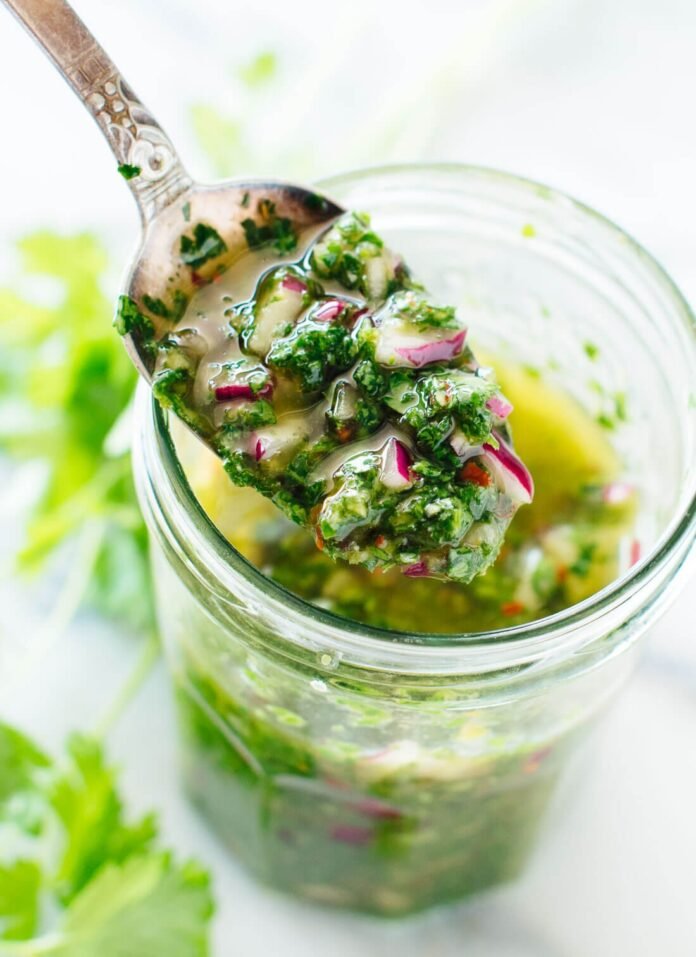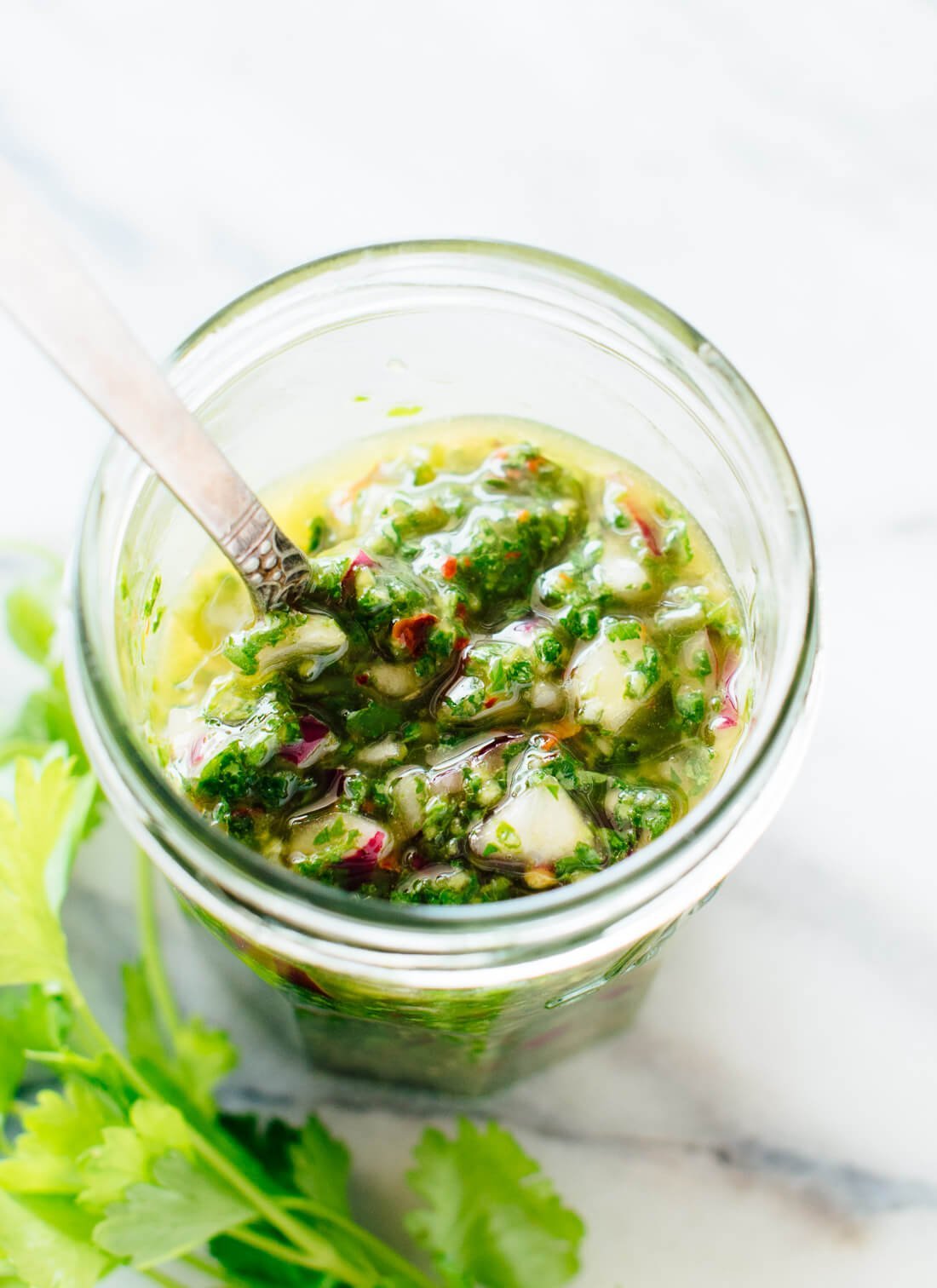
It’s grilling season! Let’s talk about chimichurri, a bold and refreshing herbed sauce hailing from Argentina. Chimichurri is a vibrant green color and tastes bright, tangy and lightly spicy, but balanced. It livens up anything it touches.
There are two kinds of chimichurri sauce, green and red. This recipe is for the more common green variety (chimichurri verde).
Authentic chimichurri verde is made with parsley, garlic, red onion, red pepper flakes, red wine vinegar, and olive oil. These simple ingredients yield a spectacularly delicious green sauce.
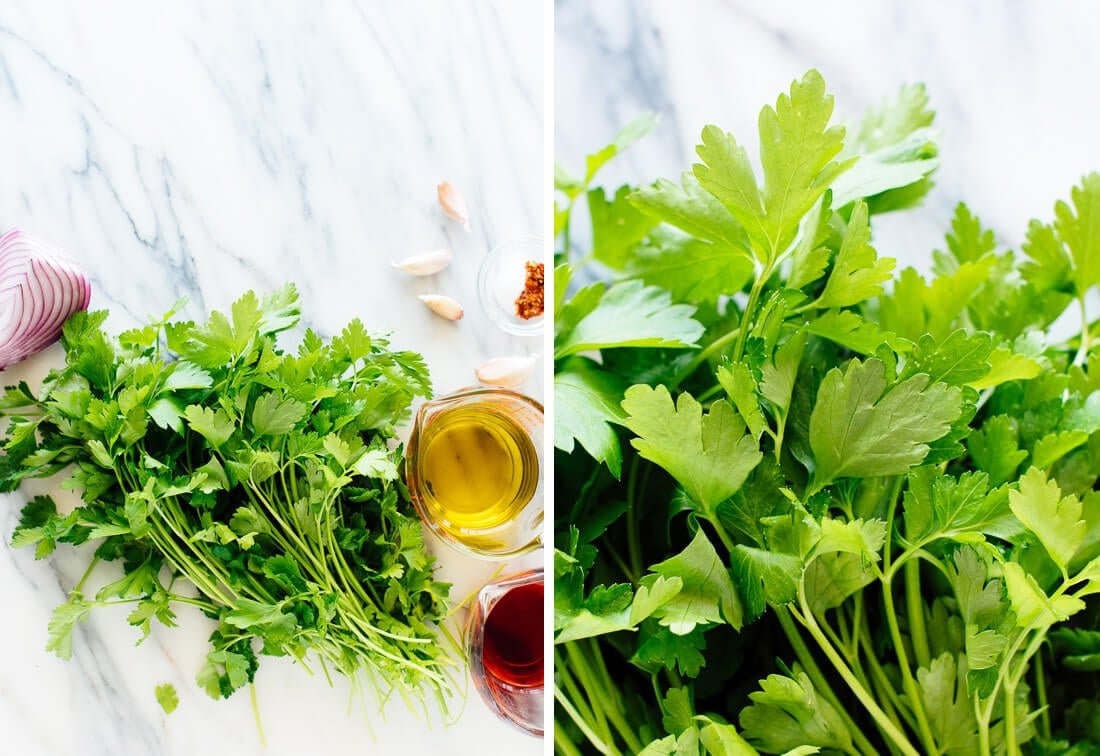
Some chimichurri recipes call for fresh cilantro in addition to parsley. However, several Argentines have told me that they don’t add cilantro in Argentina.
I took their word for it and made my chimichurri sauce with parsley alone. You’ll also see some recipes with fresh or dried oregano; I like it better without.
Be sure to use red wine vinegar for authentic flavor. If you run out of red wine vinegar but have sherry vinegar on hand, that would be a suitable substitute. Lemon juice is not the same.
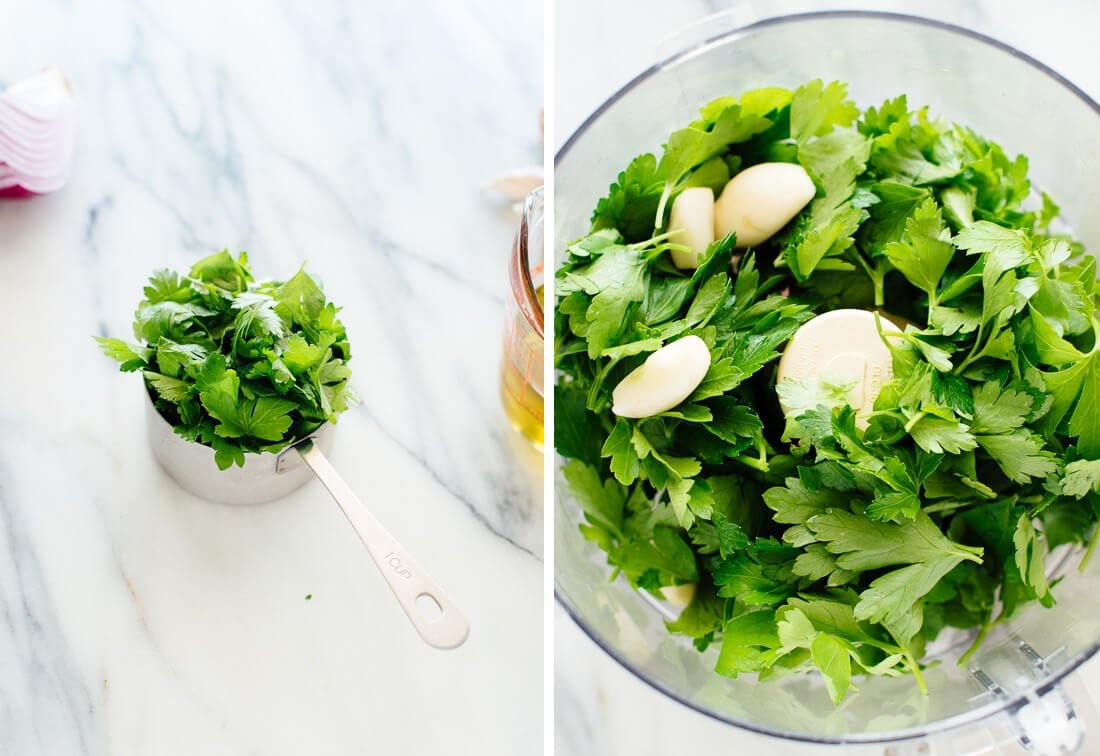
Uses for Chimichurri
Chimichurri verde is typically served on steak in Argentina and throughout South America. It’s not just for grilled meats, though, and you can get creative with leftovers (it keeps well in the fridge for up to four days).
Chimichurri sauce is lovely in meatless preparations. Don’t bother using it as a marinade for veggies like you would for chicken; it makes more of an impact swooshed on top once they are finished. Chimichurri complements mushrooms, carrots, and potatoes, no matter how they’re prepared. It also brightens up smoky grilled vegetables and hearty roasted vegetables, like sweet potatoes, beets, and cauliflower steak.
More serving suggestions: I love chimichurri on scrambled eggs or fried eggs, and whole grains like brown rice or wild rice, farro and quinoa. It’s undeniably great with chickpeas, as shown in my Chimichurri Chickpeas recipe, and also nice with black beans. It might even be good as a salad dressing or spread onto grilled corn on the cob.
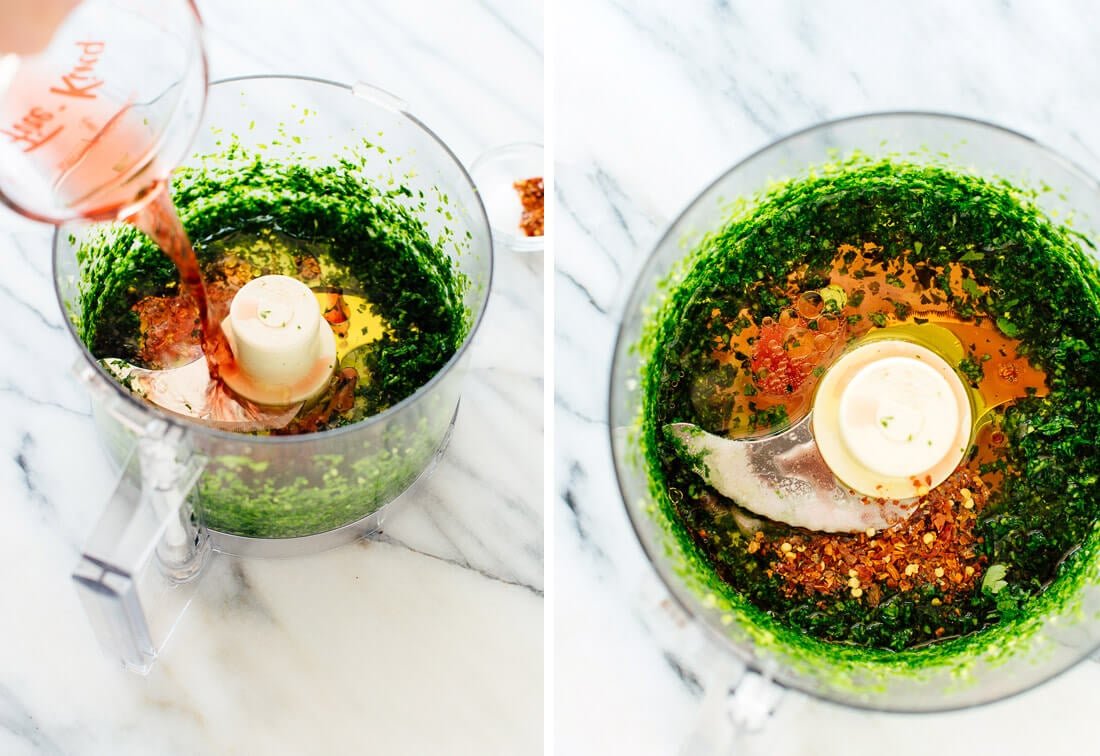
How to Make Chimichurri
Chimichurri is so quick and easy to make. Traditionally, chimichurri is made by hand in a mortar and pestle. I don’t have the patience or the time to make it by hand, and I’m confident you’ll be thrilled with the results if you use a food processor as directed in the recipe below.
Use the food processor to chop everything (including the fresh parsley and garlic) except for the onion. Finely chop the onion by hand and stir it into the mixture so it maintains its crisp texture and doesn’t overwhelm the other flavors. This is the trick to making the best chimichurri!
Watch How to Make Chimichurri
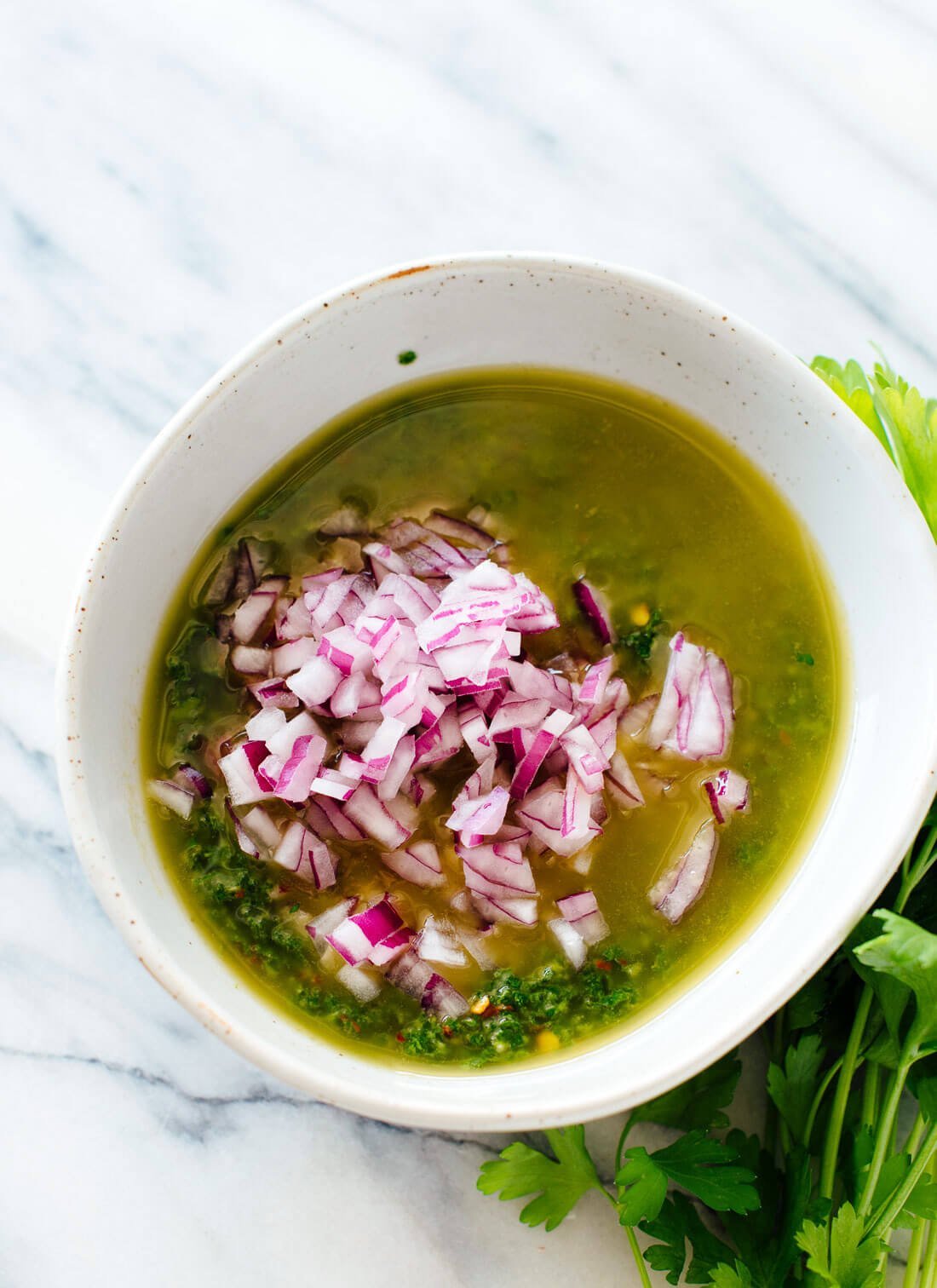
More Essential Sauces
Sauces made with fresh herbs, like chimichurri, are my specialty. Try these recipes as well:
Please let me know how you put this delicious chimichurri recipe to use. I love to hear from you in the comments.
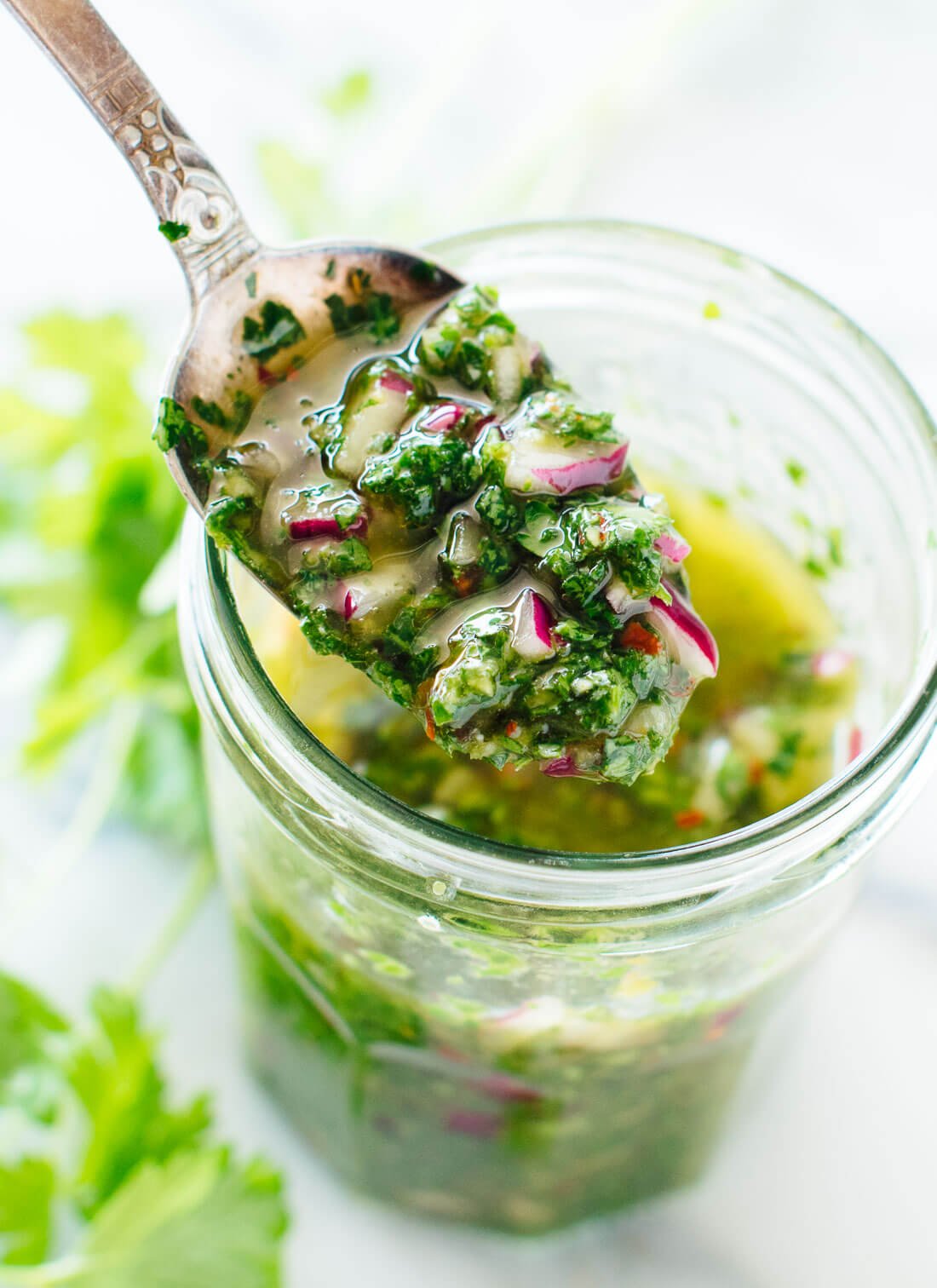
Chimichurri Sauce
You’ll love this traditional chimichurri recipe! Chimichurri verde is a popular parsley sauce from Argentina with bold, fresh flavor. It’s easy to make, too. Recipe yields 1 ½ cups.
- In a food processor, combine the parsley and garlic. Process until finely chopped, stopping to scrape down the sides as necessary.
- Add the olive oil, vinegar, salt and red pepper flakes to the food processor (don’t add the onion just yet). Process briefly to combine.
- Transfer the mixture to a small jar or bowl and whisk in the red onion until the mixture is well blended. Let the sauce rest for 10 minutes to allow the flavors to meld. Taste, and if necessary, add additional salt (sometimes I add another ¼ teaspoon) and/or red pepper flakes (for more heat).
- The sauce tastes best when served fresh, but it keeps well in an air-tight container in the refrigerator for 3 to 4 days. To prevent the sauce from turning a darker color (which doesn’t impact flavor), press plastic wrap directly against the surface before storing. If the olive oil solidifies in the refrigerator, don’t worry—let it warm up for 5 to 10 minutes at room temperature and then whisk to recombine.
Notes
Recipe adapted from The Complete America’s Test Kitchen Cookbook and Food and Wine.
Food processor notes: If you don’t have a food processor, you can finely chop the parsley (the finer, the better) and press or mince the garlic. Whisk the olive oil and vinegar together in a bowl until blended, then add the remaining ingredients and whisk again!
*Spice level: To make your chimichurri less spicy, scale back or omit the red pepper flakes. The sauce will still taste bold and zippy thanks to the garlic, onion and vinegar.
Nutrition
The information shown is an estimate provided by an online nutrition calculator. It should not be considered a substitute for a professional nutritionist’s advice. See our full nutrition disclosure here.

